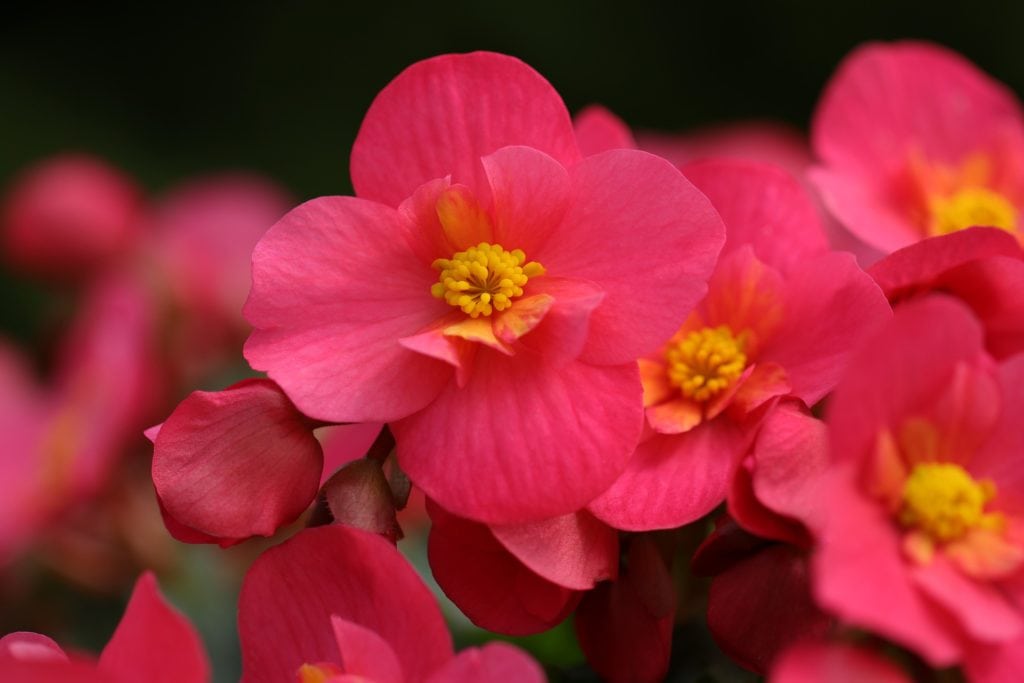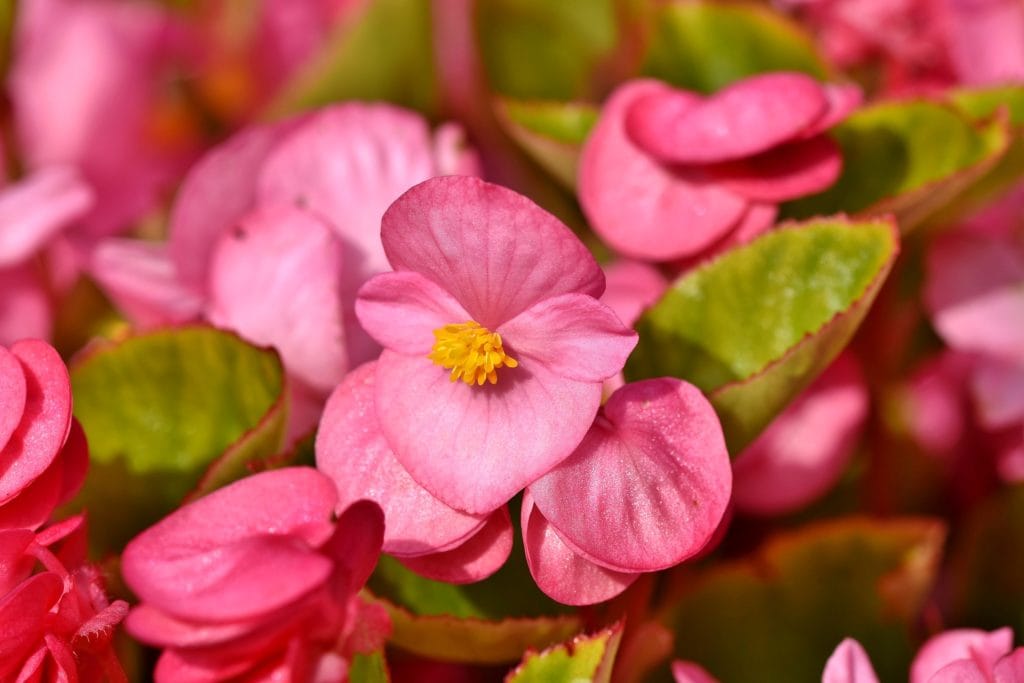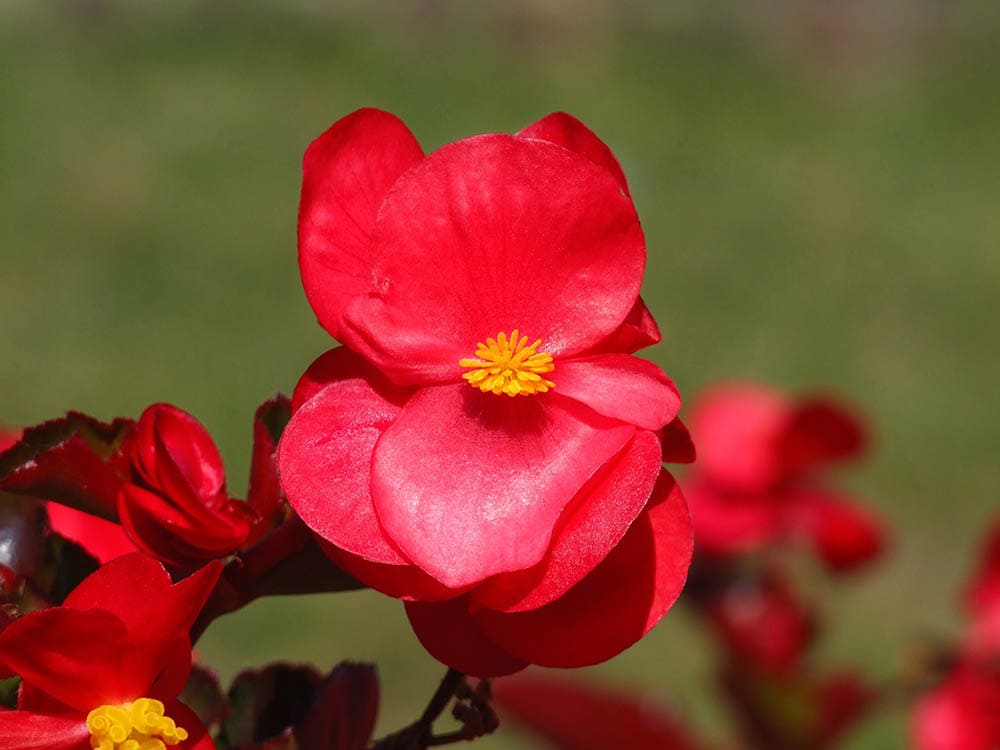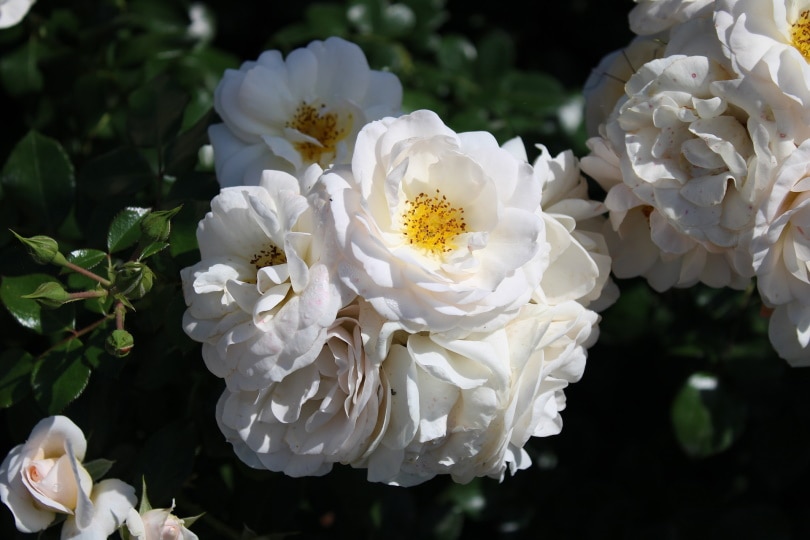How To Grow Begonias Indoors – Tips, Tricks, and Guide
-

- Last updated:

Begonias are beautiful plants that are coveted for their decorative foliage. Begonias also have a reputation for being notoriously tricky to keep alive and encourage to thrive. Despite their finicky nature, begonias can be grown indoors. It just takes a little bit of knowledge and a willingness to make changes to your indoor environment to support the growth of your plants.
This how-to guide will walk you through exactly how to grow begonias indoors, list the most common issues people run into with these flowers, and offer a variety of tips and tricks to help get you the healthiest begonias possible. If managed correctly, begonias can last for multiple years and survive all four seasons.
Before You Get Started
One of the most important steps to consider before you get started is to determine what type of begonia you are going to get or what kind of begonia you already have. There are various kinds of begonias that all have slightly different needs when it comes to their care. There are three main families of begonias: tuberous, fibrous, and rhizomatous. Each one is slightly different from the other, and care will not be consistent between these three types. For example, tuberous begonias struggle to grow indoors compared to the other types because it requires much higher levels of humidity that most people do not maintain inside their homes.
After you identify your begonia, you will need to gather some supplies to keep them healthy and happy. Begonias typically need the following items for their care.
- Sheer curtain
- Misting bottle
- Pebbles
- A well-drained pot
- Potting soil
- A drainage tray
Having these items on hand will make caring for your begonias much easier. These plants require a little more in-depth care than the typical houseplant. Be prepared to tweak and fuss with your plants to get the perfect environment established. Have patience. Begonias can last years if cared for properly, but getting them going inside can take some time and trial and error.

How To Grow Begonias Indoors (5 Tips)
1. Find a Suitable Spot
One of the most important steps to growing healthy begonias indoors is to find a good spot to live. Begonias need a lot of light, but the light cannot be direct sunlight. Do not put it in a dark corner but also don’t put it in bright sunlight either.
Begonias also do not like to get too dry or too wet. Avoid any heaters or particularly dry spots in the house. Similarly, if you have a wet area of the house like a bathroom window or a basement window, the air might be too moist for the begonia.
Zeroing in on this perfect location is one of the trickiest parts of starting your indoor begonias. Sometimes, you will need to put the plant in one spot and wait a few days to see if it looks like it is doing well and adjust if needed.
2. Manage Water and Temperature Levels

Generally, begonias like humid environments and might struggle in areas with dry air, especially in the winter. Begonias also like mild temperatures. Home temperatures where begonias are located should never drop below 55º F and should avoid exceeding 75º F.
Begonias like moist soil but despise being actively wet. Do not let begonias sit in water of any kind. This is why we suggest getting pebbles to help the soil drain and to create a drainage catch under your pot to see how much water is draining and how much is sitting in the pot. Begonias that sit in water usually die very quickly. Check the soil moisture with your finger and only water when the soil feels dry. Letting the begonia dry out slightly won’t hurt the plant and will help keep it from getting too wet.
3. Repot If Necessary
Begonias do not like being repotted. They have a sensitive root system that likes to ball up. In fact, many experts agree that begonias are usually happiest in a pot that looks just a touch too small. Repotting begonias comes with significant risk and should only be done if necessary.
Begonias should never be repotted if they are not root-bound. If a begonia is root-bound, you can repot it to a larger pot if the root ball has outgrown the pot. If the root ball still has room in the original pot, do not move the begonia.
4. Move With The Seasons

Since begonias are sensitive to humidity and temperature, they often have to be moved when the seasons change. If the original spot gets too hot and sunny in the summer, you might need to move it to a shadier spot in the house. If the begonias are sitting in a window that gets cold in the winter, you should move them to a warmer area to prevent them from getting too cold. The environment has to be maintained if you want to keep the begonias alive for longer than one year.
5. Plan For Next Season
If cared for properly, begonias can last multiple seasons and even multiple years. Tuberous begonias create tubers that can be replanted for the next season. Tuberous begonias are also the begonias that typically last the longest. In some areas, begonias are treated as annuals, as keeping them alive through the winter is too difficult. However, if managed, begonias can live through winter and come back for the next warm season.
Depending on the health of your begonia, you can start planning to try and keep it alive through the winter or plan on restarting the following year.
Common Issues For Begonias
Even if you follow these steps to a T, sometimes your begonias will not thrive. That is simply the nature of the beast. Signs that your begonia is not doing well include browning leaves, wilted appearance, or discoloration. If this happens, don’t panic. There is still time to assess and adjust your begonia environment and bring the plant back.
These are the three most common issues for indoor begonias.

Too Much Direct Light
While begonias need a lot of light in general, they despise being placed in direct sunlight. If you have a begonia that looks brown, dry, or scorched, there is a good chance your plant is getting too much light. We suggested having a sheer curtain on hand because sheer curtains are a great way to blunt the intensity of incoming sunlight while still providing the natural light the begonia needs.
Pay attention to how much light your begonia is getting throughout the day. It might get the proper levels of light in the morning and evening and be getting intense blazing sun around noon.
Too Much Water
Another common issue facing begonias is overwatering. Root rot is one of the most common ways for begonias to die, and that is typically the result of being overwatered. If you do not believe that your begonia is getting too much water, your pot might not be draining properly. If the soil is too wet, you might need to dump it and replace it with looser soil with pebbles intermixed to help drainage.
Too much water will surely kill a begonia over time.
Fungal Disease
Begonias are very resistant to bugs and other pests. Begonias rarely succumb to bugs eating them or damaging their stems. However, due to their preference for bright humid locations, they are susceptible to fungal disease. If you see a white or gray film start to appear on your plant, it could be fungus-related. The fungus can also appear fuzzy. If you suspect fungus is affecting your begonia, move the plant to a drier area and treat it with an anti-fungal spray.

Tips For Watering
Since overwatering is such an issue for begonias, it is important to ensure you have a proper watering strategy for your plant. Do not water your begonia on a schedule but water only when the soil gets dry. It is recommended to put a finger into the soil up until your first knuckle. If the soil is moist, you do not need to water it. Only water if your finger comes back dry. Check the moisture content of the soil every few days. Never use enough water to cause any liquid to sit in the pot.
Some people online have said to mist your begonia, but that is actually not recommended. If you suspect your begonia is not getting enough humidity, you can mist the air in the room but do not mist the begonia directly. Misting can actually put out a lot more water than people realize, and that water will run into the soil.
Tips For Best Lighting
The best place for a begonia is a corner near a sunny window. The window should have blinds or curtains to prevent the direct sun from hitting the begonia. If your begonia is dry and brown, you might need to move it away from the windows.
During the winter, if you plan on trying to keep your begonia alive through the season, you can supplement the low winter sunlight with an indoor UV light. Sometimes these lights work to overcome the lack of sunlight for begonias during the cold seasons.
 Conclusion
Conclusion
Do not be discouraged if you do not get perfect begonias on the first go. Also, do not be afraid to try something different if your begonia is not thriving. Begonias can be very happy inside as long as the conditions are right. With these tips, some patience and a willingness to learn healthy indoor begonias can be yours.
Featured Image Credit: Pixabay
Contents

